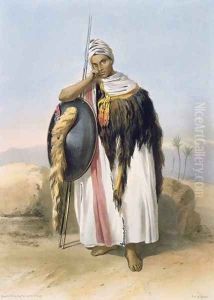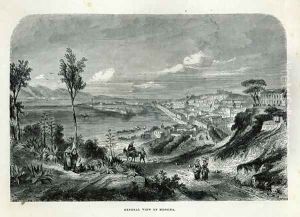Rouargue, Adolphe Paintings
Adolphe Rouargue was a French artist and engraver born in the year 1826. He was part of the Rouargue family, which included his brother Émile Rouargue, also a notable engraver. The Rouargue brothers were active during a vibrant period in French art history, contributing to the rich tradition of printmaking and engraving that France is celebrated for. Adolphe's works are characterized by their meticulous detail, capturing the essence of his subjects with precision and elegance. He specialized in landscapes, architectural views, and book illustrations, leaving behind a legacy that is appreciated in the realms of both fine art and illustration.
Throughout his career, Adolphe Rouargue collaborated with various publishers, illustrating books that ranged from travel narratives to educational texts. His engravings served not only as works of art but also as important documents of cultural and historical significance, offering insights into the locales and subjects he depicted. Unlike painters who worked with broad canvases and the immediacy of color, Rouargue's medium required a painstaking process, involving the careful carving of lines into metal plates, which were then inked and pressed onto paper. This technique allowed for high levels of detail and an enduring quality that has preserved his works for future generations to appreciate.
Rouargue's contributions to the field of engraving were part of a larger 19th-century movement in France that saw a flourishing of graphic arts. In this era, engravings were a primary means of disseminating images, long before the advent of photography in a widespread commercial context. Artists like Rouargue played a crucial role in this ecosystem, providing visual accompaniments to texts, capturing the zeitgeist of their time, and contributing to the visual culture of the period. Adolphe Rouargue passed away in 1896, but his work continues to be studied and admired for its technical skill, artistic beauty, and historical value.


